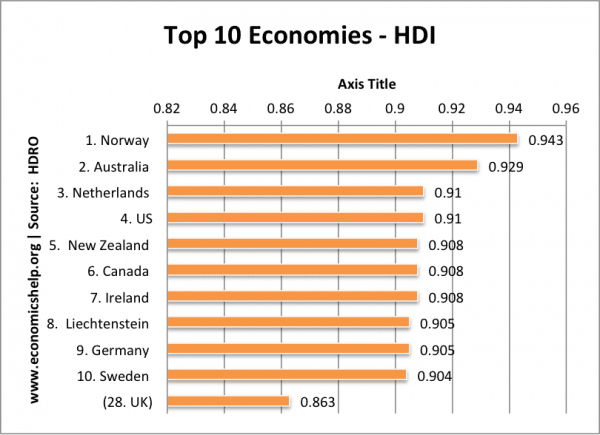The Human Development Index (HDI) is defined as a measure that, recognising limitations of GDP per capita as a measure of development, combines outcomes that might be valued in the development process. It is made up of three components: Life expectancy at birth, the adult literacy rate and GDP per capita in US$ at PPP (Purchasing Power Parity- shows what per capita income will purchase when the cost of living is taken into consideration) as an indicator of the standard of living.
As a measure of development, where development is defined as the ways in which a country seeks to grow economically and to improve the standard of living for its inhabitants, HDI has both advantages and limitations.
Advantages of HDI
- It allows judgement to be made on a country's development over time.
- A poor HDI will bring attention to the nations with the lowest levels of development. This may act as a guide to the allocation of international aid.
Limitations of HDI
- HDI focuses on only three aspects of development and therefore does not provide a complete picture of a nations true level of development.
- It fails to take account of qualitative factors such as cultural identity and political freedoms ( e.g. human security, gender opportunities and human rights).
- The GDP per capita figure (and consequently the HDI figure) takes no account of income distribution. If income is unevenly distributed, then the GDP per capita will actually be an inaccurate measure of the monetary well-being of the people.

No comments:
Post a Comment